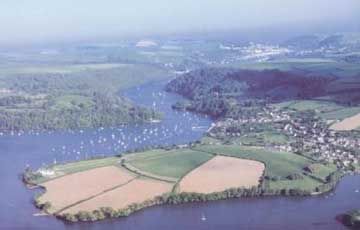Sailing & Boating
Dittisham is situated at the widest part of the River Dart, where at high tide the water stretches for over a mile to Galmpton on the far shore. Known as Dittisham Lake, this is the largest cleararea for sailing on the river.
Visitors to the village will have no difficulty in enjoying sailing and boating on the river. If you do not bring your own boat, as many people do, then it is easy to hire one. Boat Hirers can provide life jackets if required.
By boat it is easy to get to Dartmouth for shopping etc; but do check the tidesif heading for Stoke Gabriel, Bow Creek or Totnes, as these do dry out at certain stages of the tide. The Sailing Club, which holds events regularly throughout the season, welcomes visiting members. The club offers temporary membership at a low rate to visitors, who may keep their dinghies in the dinghy park. For those with larger boats, visitors’ moorings are available.
The river flows very strongly during Spring Tides, which occur roughly every two weeks. Consideration should be given to the tides and also increased pollution in recent years by those contemplating swimming.

Coast Guard
* Click here for more information about the Coastguard CG66 Safety Identification Scheme
There are a number of Visitors Moorings which are clearly marked. Information concerning moorings on the river can be obtained from the Dart Harbour Navigation Authority Offices at Dart House, Oxford Street, Dartmouth, Devon, or the harbour patrol boat.
Fishing
There are eleven miles of river and plenty of good fishing can be enjoyed. In the centre of the river, off Dittisham, is a large sandbank known as Flat Owers. This is a local cockle bank and people may often be seen scraping for them. Care must be taken if landing on the bank as it is very soft in places. If attempting this, please take local advice and above all keep an eye on your boat, the tides come in very quickly. In this area are Flat Fish which feed off the bank and Peeler Crab, Lugworm or Rag is a good bait to use.
Lower down the river towards Noss Shipyard is a deep area known as Ray pit. As its name implies, it is a good place to fish for Ray and many fine specimens are caught here. Blackness Rock, just up the river, at the mouth of Dittisham Mill Creek, is another fine spot where good fishing may be had, it is a very good area for float fishing. With a little patience and luck, you could land a nice Bass. Deep Sea Fishing trips can be taken from Dartmouth.
Dart Salmon
The River Dart is one of the most famous salmon rivers in the South West Peninsula of England. Only professional Fishermen, using nets may fish the tidal reaches of the river. Fish taken from the river find their way to the tables of the rich and famous all over the country. Omar Sharif is reputed to have said that smoked salmon from the River Dart was the best in the world.
The young salmon are spawned and spend the first few months of their lives up in the rivulets and streams that form the tributaries of the Dart. Here they are preyed upon by a large number of creatures and a great percentage never leave their native river. Those that survive, however, start to make their way down river and out to sea and begin their long journey to feeding grounds off the Greenland coast. Here they grow rapidly, increasing in weight by about 100% in the first year, after a period of time, varying on one to five years, return again to the river of their birth.
There are salmon moving up the Dart for breeding throughout the year. The two main runs however, occur in early spring and mid to late summer. The older and consequently larger fish tend to come in the spring run,when fish averaging around 11lb are caught. The record size in recent years is just over 50lb. In the late summer the smaller, younger fish return. These fish weigh on average about 5lb, and are called locally ‘harvestmen’ indicative of the time of the run.
The fish cannot be taken on rod and line in the estuary of the river, one has to go to the edges of Dartmoor before fly fishing becomes effective. The lower reaches of the river supports fifteen licensed seine-netting boats, two of which come from Dittisham. These boats shoot a net, which is about 100 yards long, from the shore in a semi-circle returning again to the shore, the net is then hauled in by the three or four man crew. This method of fishing is centuries old and in many cases the licences have been in the same families for generations.
